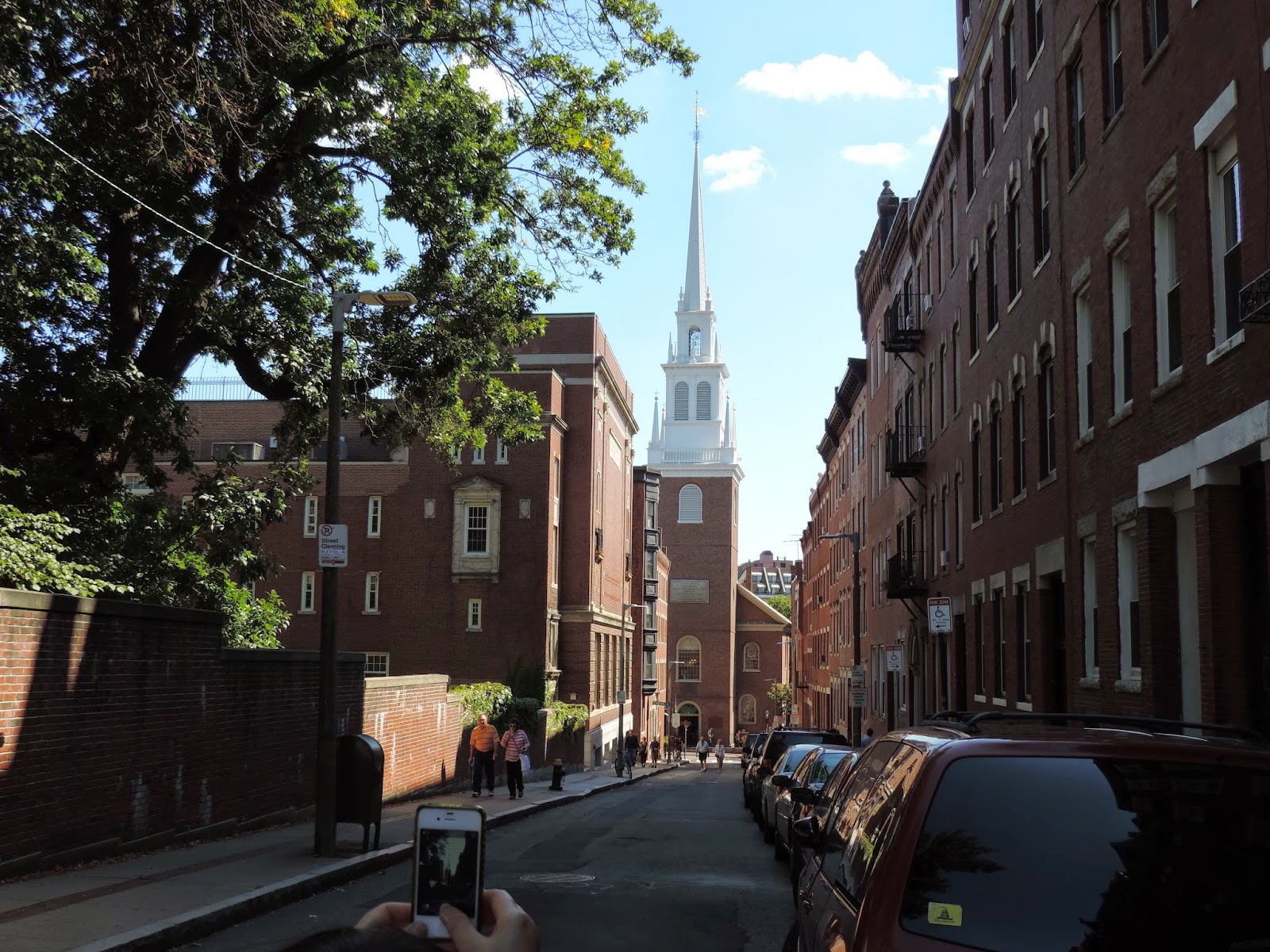Some of the names on the memorial are very unusual - Decory Priest, Desire Minter, Love & Wrestling Brewster, Oceania Hopkins, Remember Allerton are but a few.
From the memorial we went down to the coast to see the replica of the Mayflower, the ship that transported mostly English Puritans and Separatists, collectively known today as the Pilgrims, from Plymouth England to the New World. There were 102 passengers and the crew is estimated to be approximately 30 but the exact number is unknown.
Mayflower II, is a replica of the 17th-century ship celebrated for transporting the Pilgrims to the New World.
The replica was built in Devon, England, during 1955–1956, in a collaboration between Englishman Warwick Charlton and Plymouth Plantation, an American museum. The work drew from reconstructed ship blueprints held by the American museum with hand construction by English shipbuilders' using traditional methods. On 20th April, 1957, recreating the original voyage, Mayflower II was sailed across the Atlantic Ocean, under the command of Alan Villiers. According to the ship's log, Mayflower II was towed up the East River into New York City on Monday, 1st July, 1957.
We were warned that we may be disappointed when we saw Plymouth Rock, the traditional site of disembarkation of William Bradford and the Mayflower Pilgrims who founded Plymouth Colony in 1620,
and we can understand why. Expecting a huge rock rising out of the sea this is what we saw.
However, the real Plymouth Rock was a boulder about fifteen feet long and three
feet wide which lay with its point to the east, thus forming a
convenient pier for boats to land during certain hours of tide. This
rock is authenticated as the pilgrims' landing place by the testimony of
Elder Faunce, who in 1741 at the age of ninety-five was carried in a
chair to the rock, that he might pass down to posterity the testimony of
pilgrims whom he had personally known on this important matter. Disappointed in it's size we were certainly happy to see such a piece of history.
Another piece of history in Plymouth is Cole's Hill, a National Historic Landmark containing the first cemetary used by the Pilgrims in Plymouth in 1620. The hill is located on Carver Street near the foot of Leyden Street and across the street from Plymouth Rock.
The Pilgrims built their first houses on Leyden Street rising from the side of Cole's Hill to Burial Hill,
and the hill was used in 1620-1621 as a burial ground during their
first winter in New England. The Pilgrims built their original fort on
nearby Burial Hill where several Pilgrims were later buried. The nearby
fort housed the original First Parish church in Plymouth and the Plymouth General Court.
Cole's Hill was named after either the tavern owner James Cole who
arrived in Plymouth in 1633 or John Cole who purchased the hill around
1697. The hill was transformed into a public park during preparations for the
celebration of tercentenary (300th anniversary) of the Pilgrims'
arrival. Existing buildings were removed from the hill and paths and
plantings were added, unfortunately we didn't have time to go up the hill.On the way back to the coach, a little further down the street from the legend about Cole's Hill, we saw this rather lovely statue, a granite figure of a Pilgrim woman on the 'Memorial To The Women on the Mayflower' which has become to be known as 'The Pilgrim Mother'.
On the shaft of the fountain that flows behind the statue are listed the names of the women of the Mayflower, in whose memory the National Society, Daughters of the American Revolution gave the statue. The inscription reads 'They brought up their families in sturdy virtue and a living faith in God without which nations perish'.
It was time to move on as we had other places to visit and our next short stop was at this lovely place, Sandwich,
where we were able take photos of this still working Grist Mill.
In 1620, the Pilgrims first sheltered in Provincetown Harbor for five weeks, where they signed the Mayflower Compact, before sailing across Cape Cod Bay to Plymouth where they settled.
The Mayflower Compact was the first governing document of Plymouth Colony. It was written by the Separatists, sometimes referred to as the "Saints", fleeing from religious persecution by King James of England. They traveled aboard the Mayflower along with adventurers, tradesmen, and servants, most of whom were referred to, by the Separatists, as "Strangers". The Mayflower Compact was signed aboard ship on November 11 1620, while the Mayflower was anchored in Provincetown Harbor, by most adult men.
We continued on to Chatham, a town in Barnstable County, first settled by the English in 1664, the township was originally called Monomoyick, based on the indigenous population's term for the region, according to this monument in memory of the pioneers.
A sweet little town, the population was 6,125 at the 2010 census.
We stopped at this restaurant for lunch,
We didn't have long in Chatham before it was time to board the coach again for our last stop of the day, Hyannis, to see the JFK Memorial
on the Lewis Bay waterfront which was erected by Barnstable citizens in 1966. The memorial includes a fountain and a field-stone monument with the presidential seal and JFK inscription
There is also another memorial there to the Korean War (the Forgotten War).
Lewis Bay is truly lovely, I wouldn't mind living there!
After a really interesting and enjoyable day it was, unfortunately, time to head back for our last evening in Boston before the next part of our journey to Concord, the state capital of New Hampshire. I hope you'll join me for Part 3.






















































